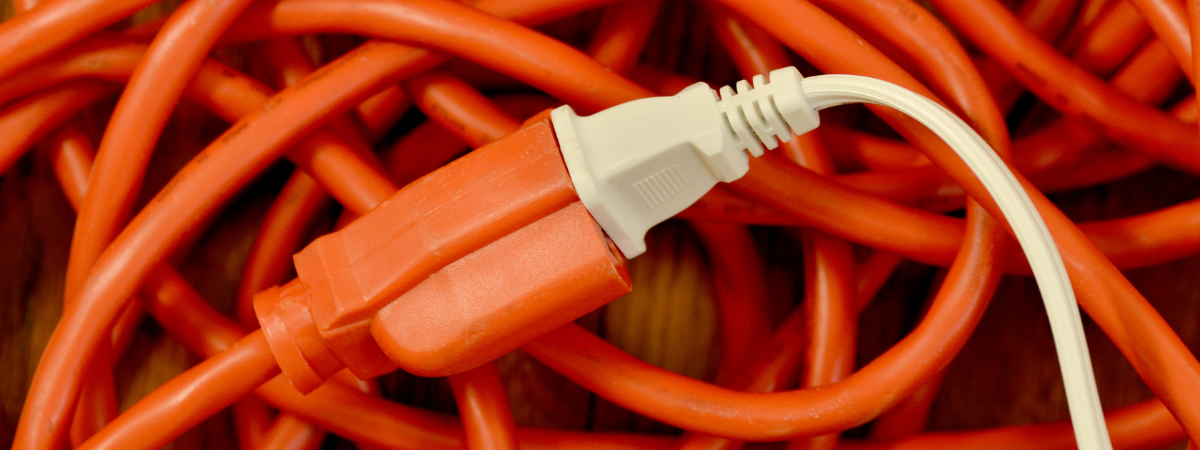Holiday Extension Cord Safety

It's holiday time! Whether you are planning a fantastic holiday light display or simply needing to power an extra item or two, you are more then likely reaching for an extension cord.
On average, extension cords are responsible for roughly 3,000 house fires per year. According to the Electrical Safety Foundation International, about 270 people are injured and about 50 people die each year from extension cord related fires.
It is important to know how to choose and use the right extension cord safely. Here are a few tips for selecting the appropriate extension cord:
- Select a cord that is approved by UL, ETL, or CSA.
- Choose a cord with a 3-prong plug and if possible. If using outside, use a polarized plug.
- Polarized plugs can only be inserted into an outlet in one direction due to the shape of the blade. The blade is wider on one side than the other. These cords also contain a ground line and have better insulation to protect them from the elements. Appropriate cords will be marked for outdoor use on the packaging.
- Choose a cord with a 2-prong plug for small appliances and they are adequate for most indoor festive lights. Make sure they are suitable for the plug sockets in your home.
- Make sure to select a cord that is long enough for your needs. Never plug an extension cord into another extension cord to extend it.
- Know what you are powering and choose a cord that can provide the right load amount. If you buy one with insufficient power for your needs, you risk overheating and can cause an electrical short or fire.
- The thickness of the cord will be a clue to its power. Small appliances and electronics can use thin or flat cords. Larger ones need thick, round, low-gauge cords able to handle higher amperage/watt flow. The amperage is the measure of electrical current flow. The wattage is the amount of electrical power of an appliance or lamp.
- Look at the label on the cord and match it to your electrical needs. If you are unsure as for help.
- Length of the cord makes a difference. The longer the cord, the more the voltage drops. If you are running a 50 ft. cord, select a higher rating to account for that loss.
